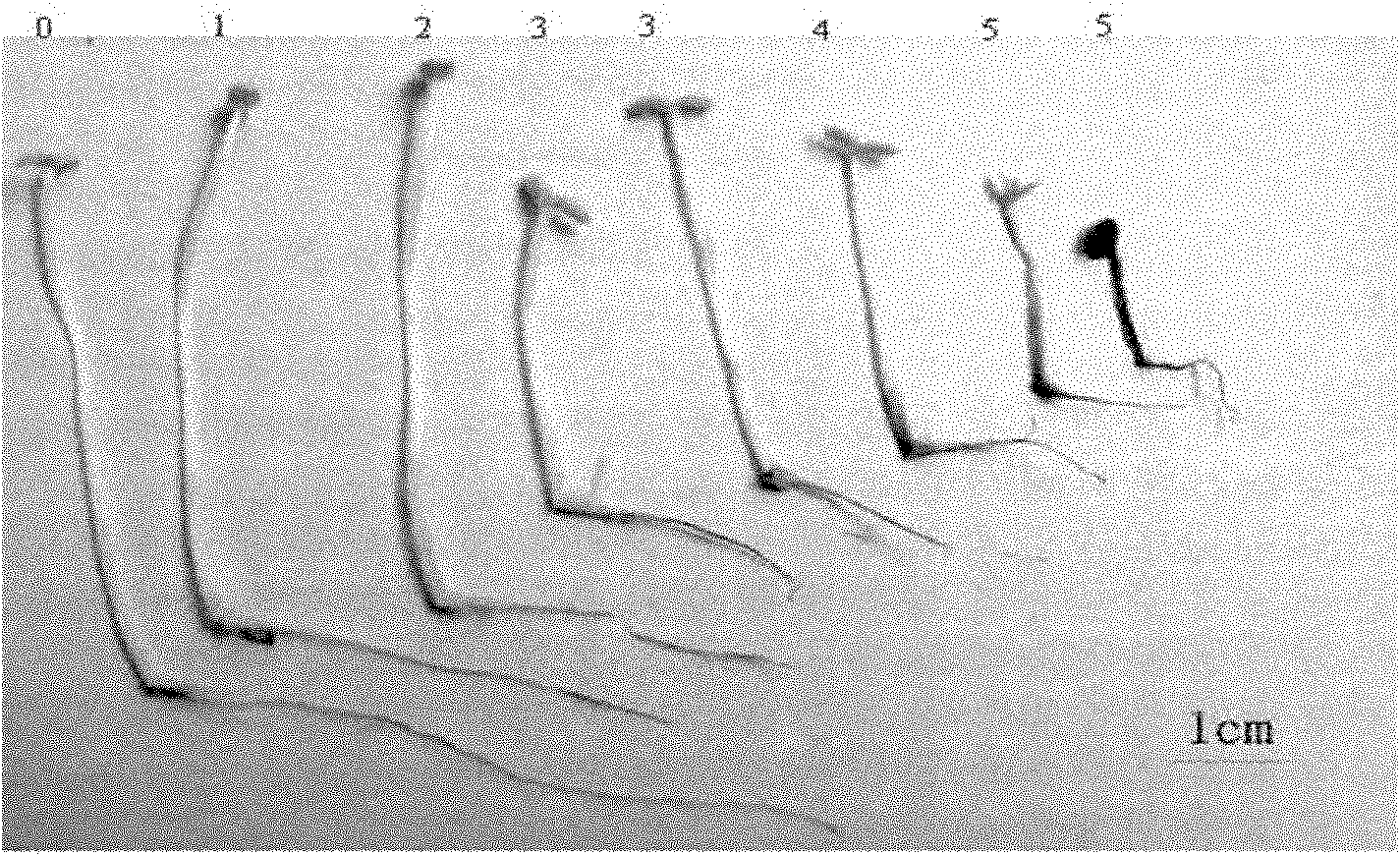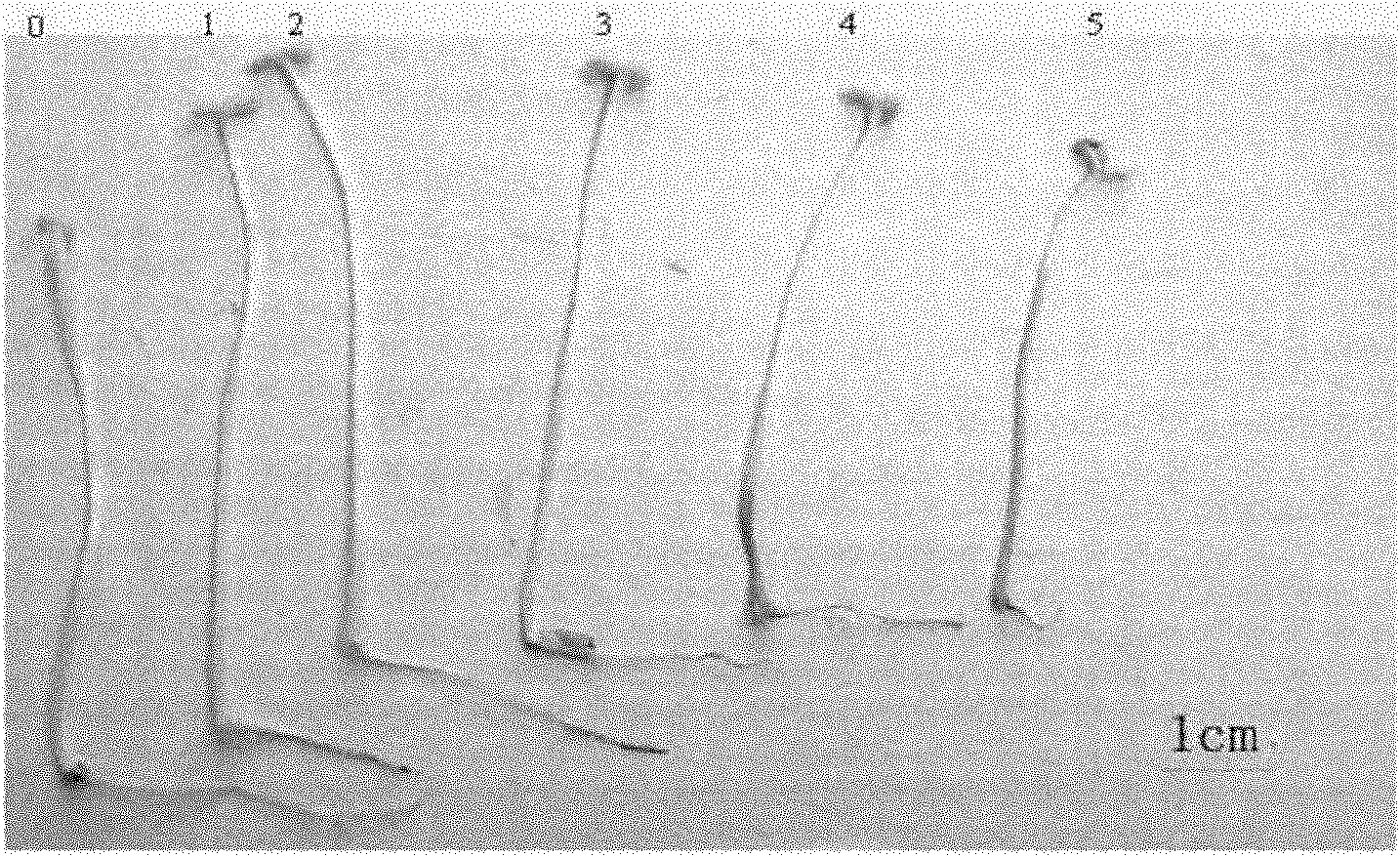Method for identifying pathogenicity of sesame stem blight and blast pathogenic bacteria
A technology of pathogenicity and pathogenic bacteria, which is applied in the field of identifying the pathogenicity of sesame stem blight and fusarium wilt pathogens, can solve the problems of impossible simultaneous identification of multiple pathogenic bacteria, cumbersome reliability, long cycle, etc., and achieves low cost. , the results are reliable, the effect of less equipment
- Summary
- Abstract
- Description
- Claims
- Application Information
AI Technical Summary
Problems solved by technology
Method used
Image
Examples
Embodiment 1
[0043] Example 1: Pathogenicity identification of 36 different sources of sesame stem blight pathogenic bacteria
[0044] (1) Preparation of sesame stem blight pathogenic fungus mycelia: get the disease-health junction of sesame plants infected with stem blight, adopt 0.1% (weight percent) mercuric chloride aqueous solution to sterilize, and inoculate on the PDA medium for dark cultivation to form After colonization, the mycelium was picked at the edge of the colony and subcultured on the PDA medium until the colony was uniform, and then subjected to spore-inducing culture to obtain purified Septococcus phaseolus hyphae from single-cell culture for preservation.
[0045] (2) Cultivation of strains for inoculation: inoculate the preserved hyphae of Septoria phasemosa in the center of a petri dish (90 mm in diameter) containing PDA (Potato dextrose agar) medium sterilized by high temperature and high pressure for 15 minutes, and Parafilm membrane Seal and incubate in the dark at...
Embodiment 2
[0061] Example 2: Pathogenicity identification of 28 sesame wilt pathogens from different sources
[0062] (1) Preparation of sesame fusarium wilt pathogen mycelium: get the disease-healthy junction of the sesame plant that infects fusarium wilt, adopt 0.1% (weight percent) mercuric chloride aqueous solution to sterilize, inoculate on the PDA medium after dark cultivation forms bacterium, in The hyphae were picked from the edge of the colony and subcultured on the PDA medium until the colony was uniform, and then cultured by spore induction to obtain purified mycelium of Fusarium oxysporum Sesame-specific fungus for single cell culture and to preserve.
[0063] (2) Cultivation of inoculated strains: Inoculate the well-preserved mycelia of Fusarium oxysporum Sesame specialization type fungus in the center of a petri dish (90mm in diameter) containing PDA (Potato dextrose agar) medium, seal it with Parafilm film, and culture in the dark at 30°C 7d, resulting in the formation of ...
PUM
| Property | Measurement | Unit |
|---|---|---|
| Diameter | aaaaa | aaaaa |
Abstract
Description
Claims
Application Information
 Login to View More
Login to View More - R&D
- Intellectual Property
- Life Sciences
- Materials
- Tech Scout
- Unparalleled Data Quality
- Higher Quality Content
- 60% Fewer Hallucinations
Browse by: Latest US Patents, China's latest patents, Technical Efficacy Thesaurus, Application Domain, Technology Topic, Popular Technical Reports.
© 2025 PatSnap. All rights reserved.Legal|Privacy policy|Modern Slavery Act Transparency Statement|Sitemap|About US| Contact US: help@patsnap.com



